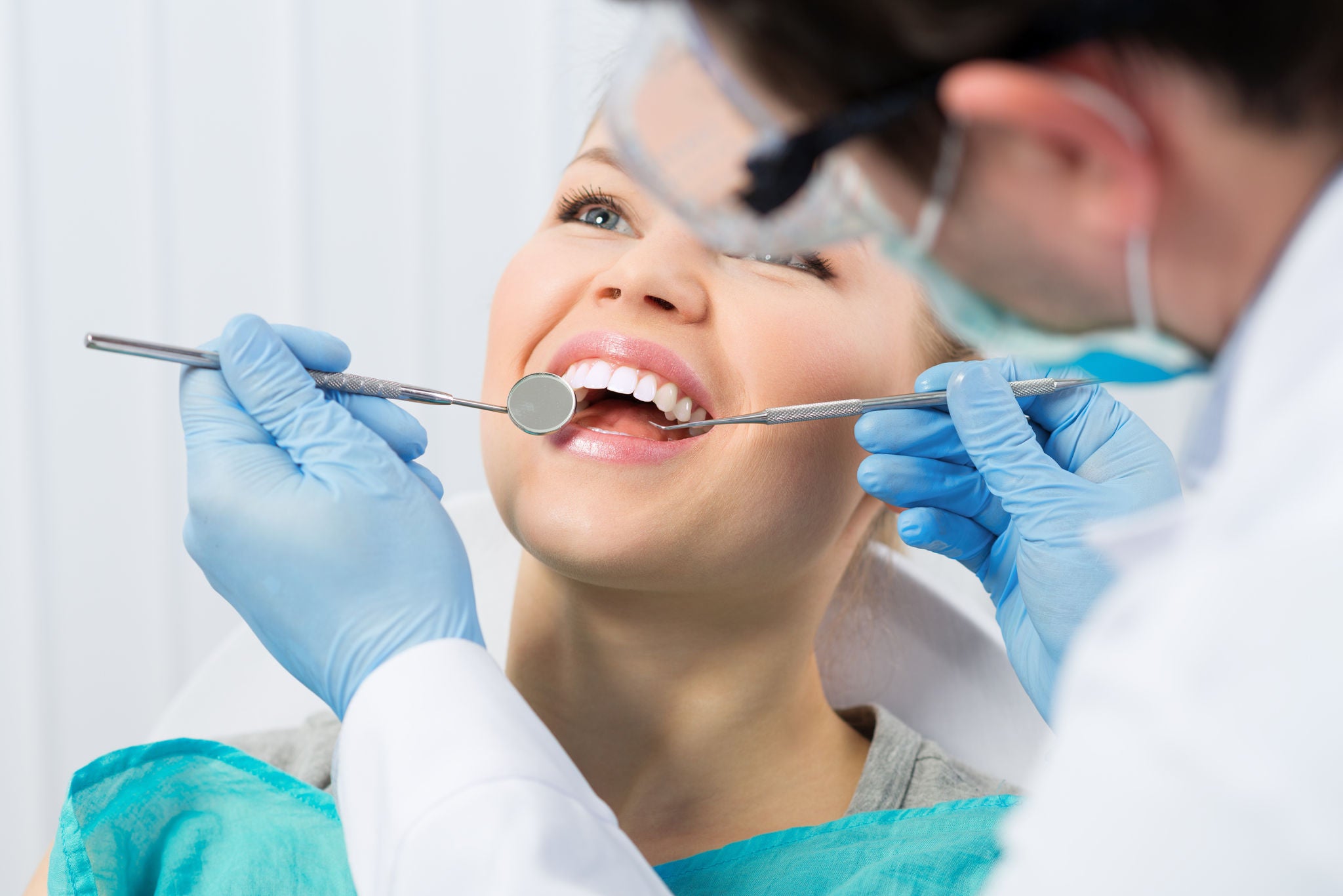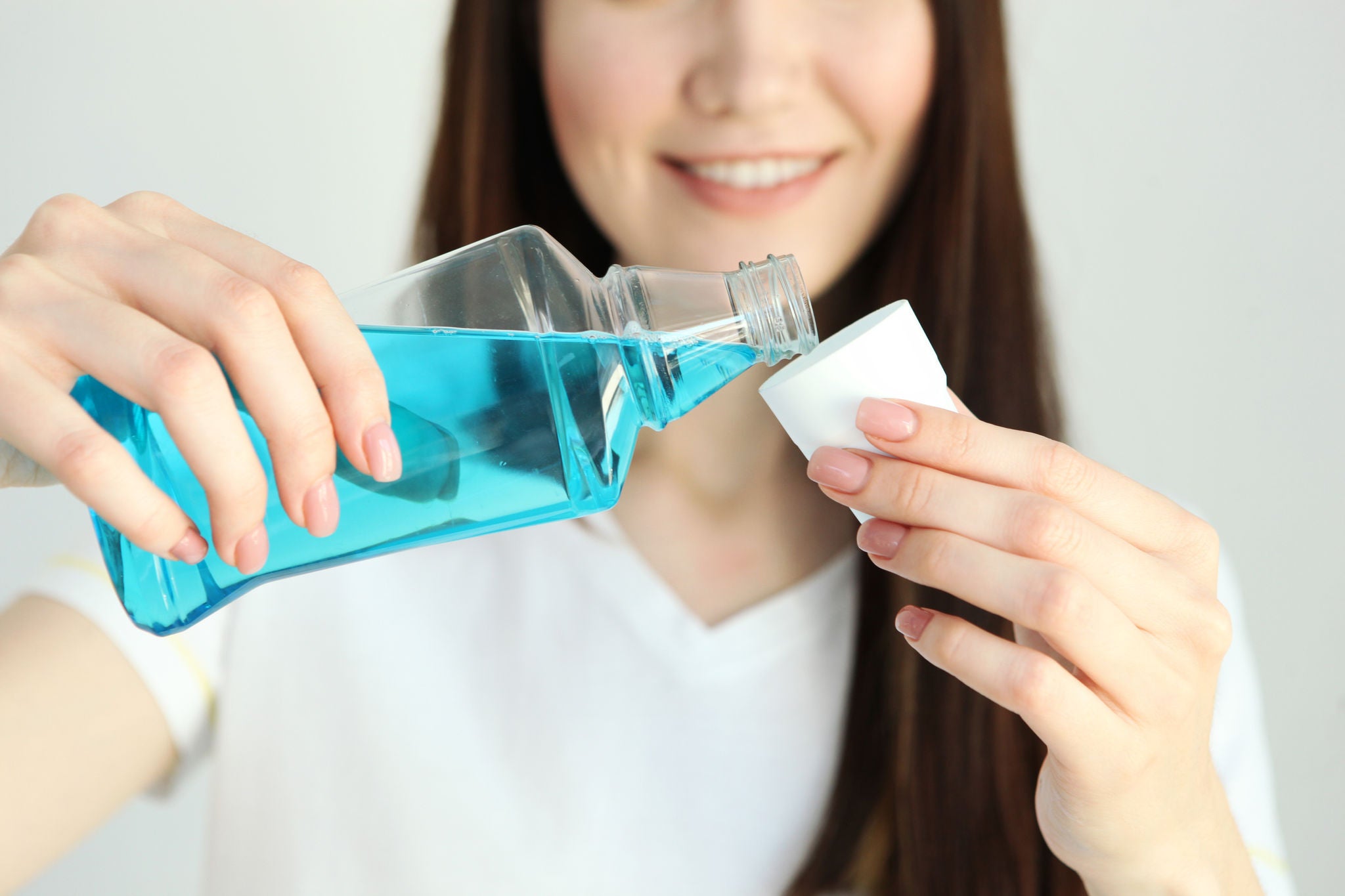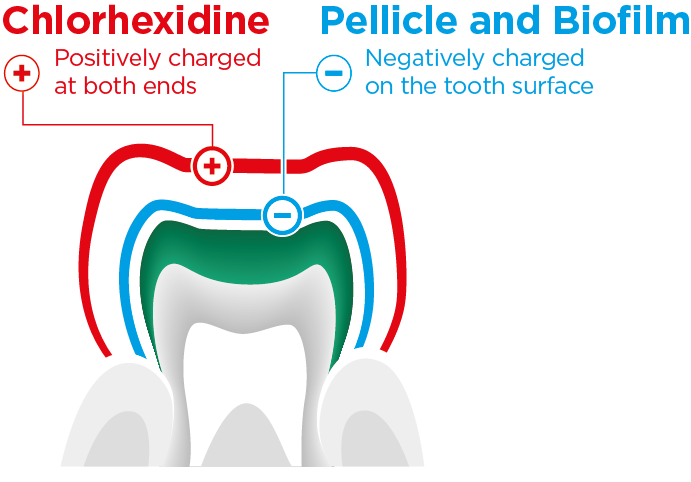
Chlorhexidine, the Gold Standard in Dentistry, Mode of Action
The active ingredient Chlorhexidine (CHX) is considered the gold standard mouth rinse against which other newer mouth rinses are compared [1]. In a systemic review and network meta-analysis comparing the efficacy of different anti-plaque chemical agents, chlorhexidine showed the greatest effect when used as the active ingredient in both dentifrices and mouthwashes.

The study found that chlorhexidine was far more effective than stannous fluoride when used in a dentifrice and far more effective than delmopinol, alexidine, and cetylpyridinium chloride when used in a mouthwash. [2]
It has well known antiplaque properties, and is effective against multiple microbes including bacteria and oral yeasts such as candidiasis [3] and oral yeasts such as candidiasis. [4]

Years of documented research have established that Chlorhexidine is safe, stable and effective. Dentists often prescribe Chlorhexidine to prevent and control plaque formation, breaking up existing plaque and inhibiting the development of gingivitis [5].
Mechanism of Action
Its mechanism of action is interesting. Being a cationic (positively charged) molecule, CHX binds to the negatively charged anions of bacteria and tooth surfaces (pellicles), inhibiting the formation of dental plaque. Its antibacterial action is due to the disruption of the bacterial cell membrane by the CHX molecules, increasing the bacterial cell permeability and resulting in cell lysis (i.e. cell membrane break-down).
Chlorhexidine (CHX) can be either bacteriostatic or bactericidal depending on the dose [6]. Its principle mechanism of action is the inhibition of bacterial metabolism (bacteriostatic effect), limiting the growth of bacteria by interfering with bacterial DNA replication and bacterial cellular metabolism [7]. At higher doses it can also have a bactericidal effect, leading to the complete destruction of bacterial cells (bactericidal effect).
CHX has a broad antimicrobial spectrum and exerts its action on both gram + and gram – bacteria, yeasts, dermatophytes, molds and lipophilic viruses.
Sustained action keeps working after rinsing time
CHX’s effect is sustained beyond the 30 second rinsing time recommended. This is because cationic CHX binds to negatively charged sites on the bacterial surface wall through electrostatic forces, allowing CHX to be active in the oral cavity beyond the pure rinse time.
While many other antibacterial agents are relatively quickly eliminated (such as by spitting out or ingestion) or are inactivated after use, CHX exhibits a continuous antibacterial activity over a period of more than twelve hours [8]. Due to this long “residence time” in the oral cavity, even bacteria that rapidly re-colonize the oral tissue and saliva are inhibited or killed by the continued presence of chlorhexidine.
Accordingly, chlorhexidine continues to be a gold standard ingredient for mouthwashes addressed to patient care post dental intervention. CHX is indicated for the maintenance phase post root planning, periodontal surgery and other oral surgeries, including dental implants and intermaxillary (IMF) fixation.
The GUM® PAROEX® range contains different concentrations of Chlorhexidine and offers professional plaque control for optimal gum health.
